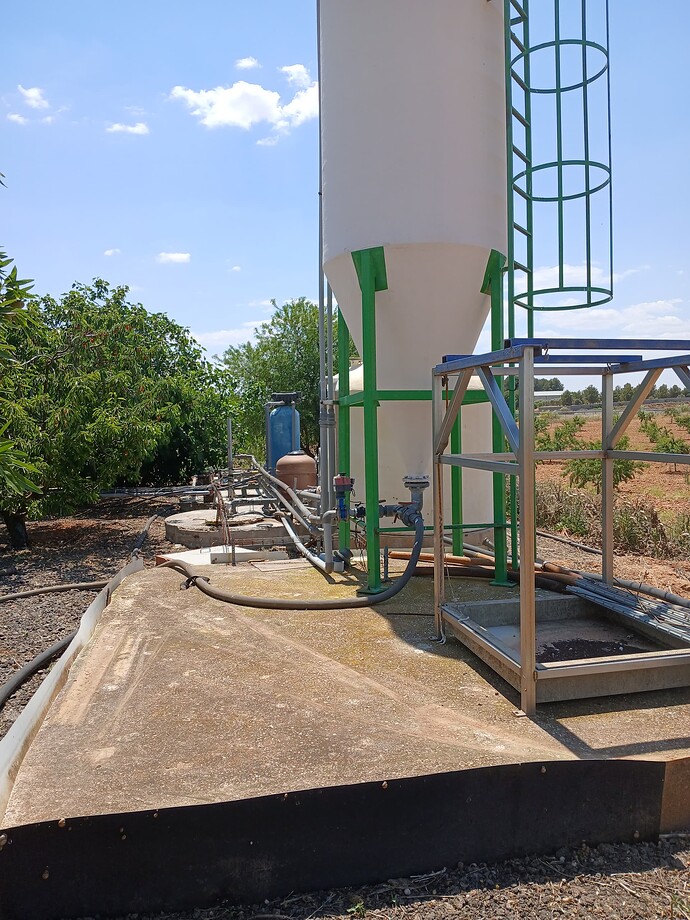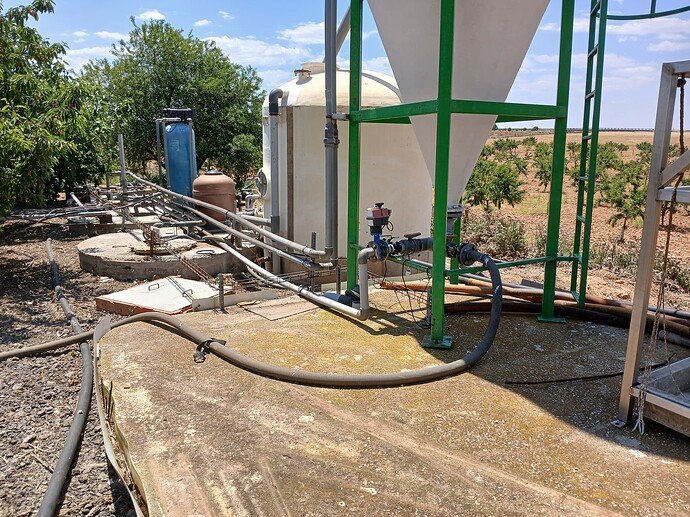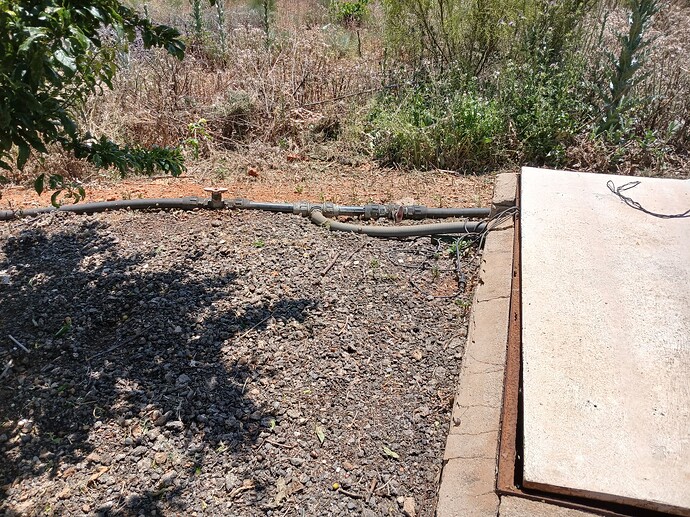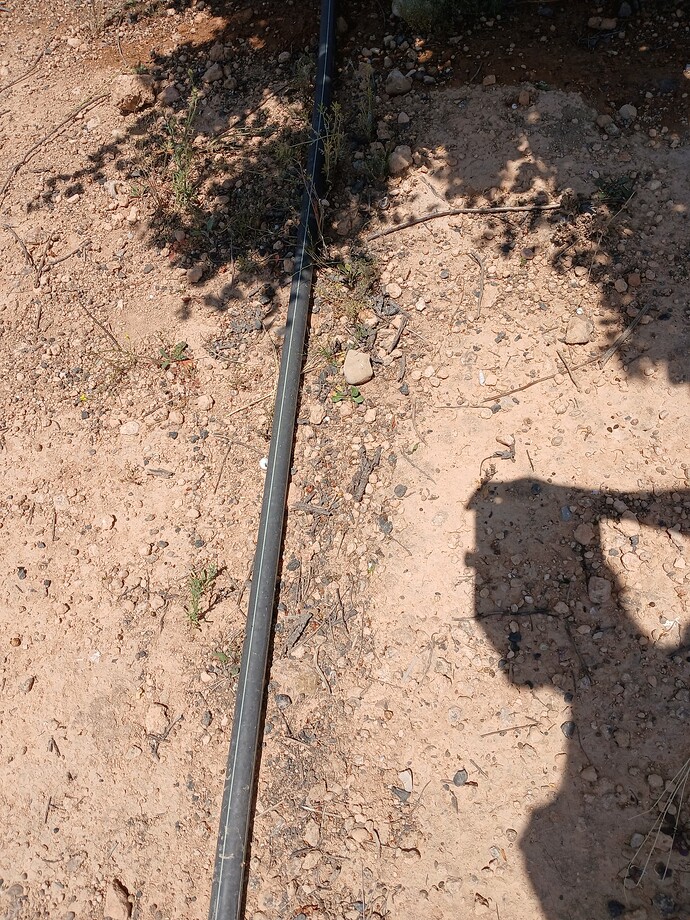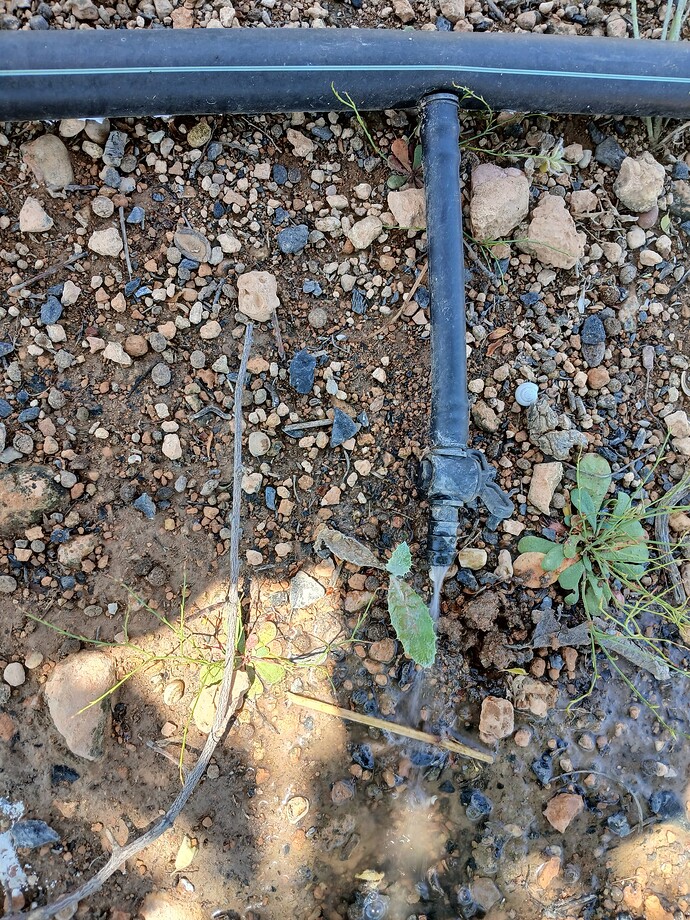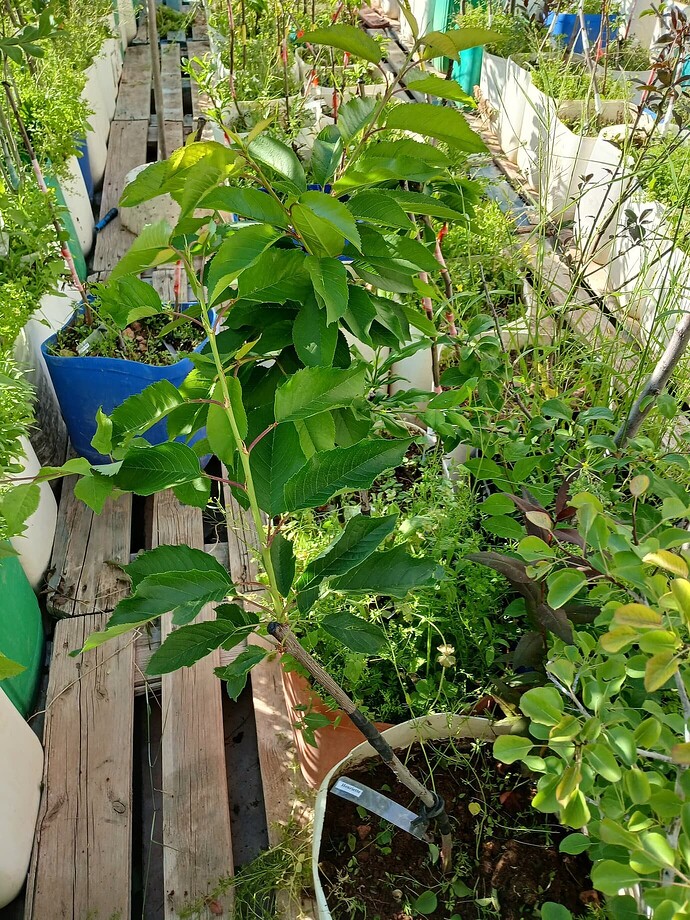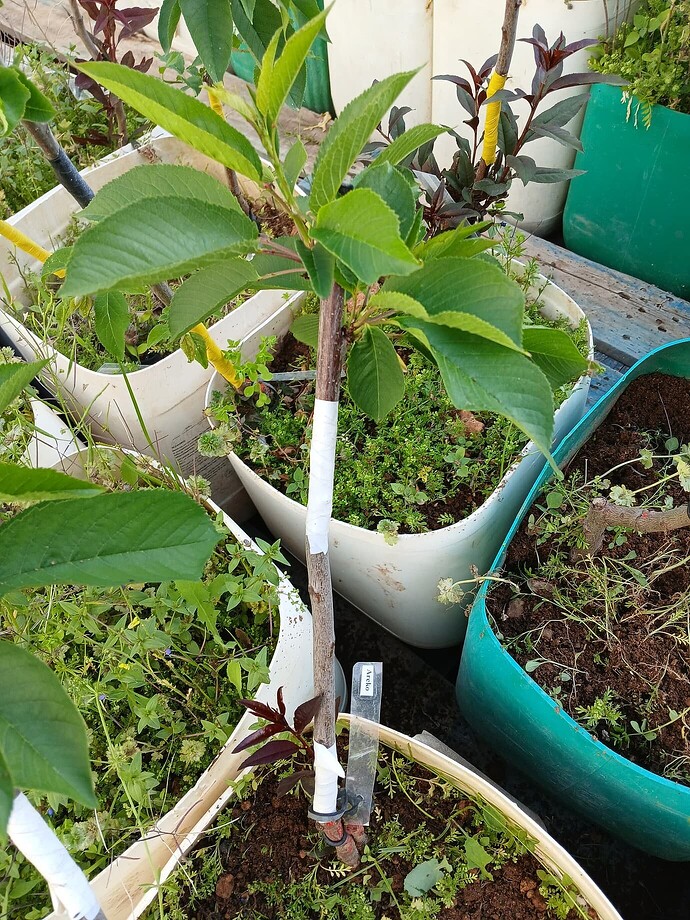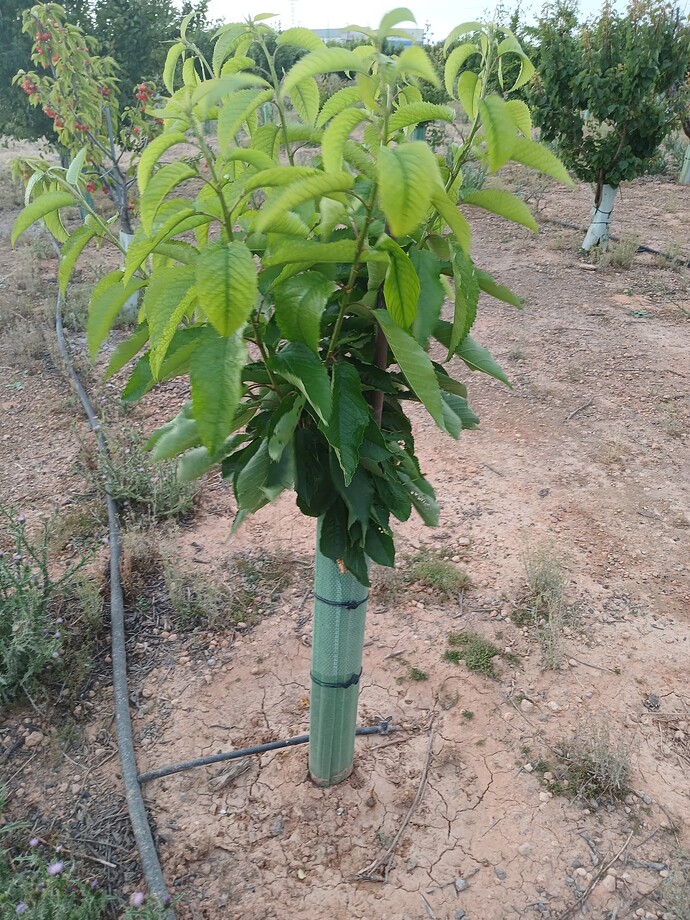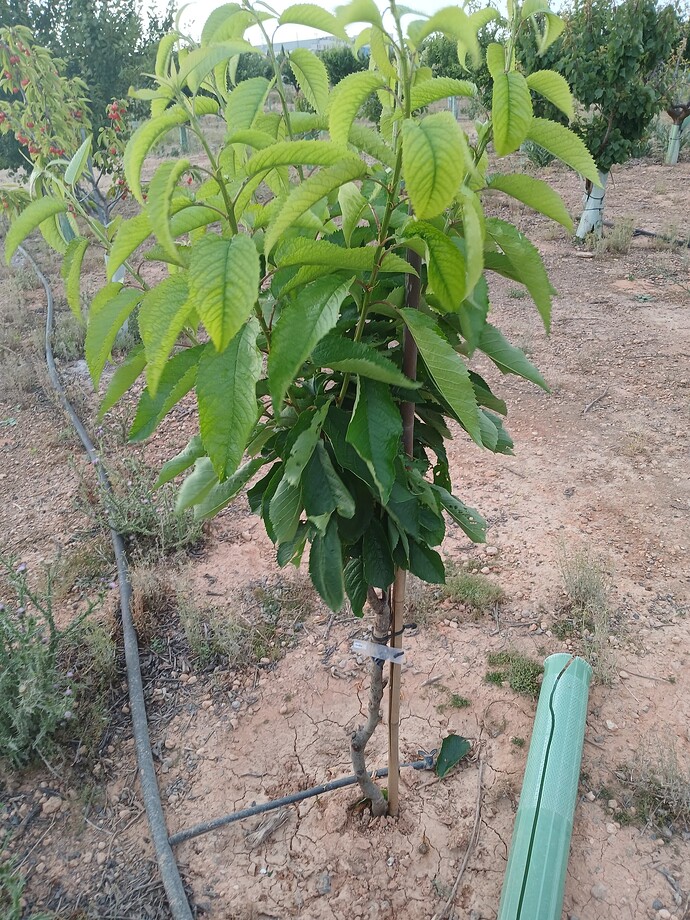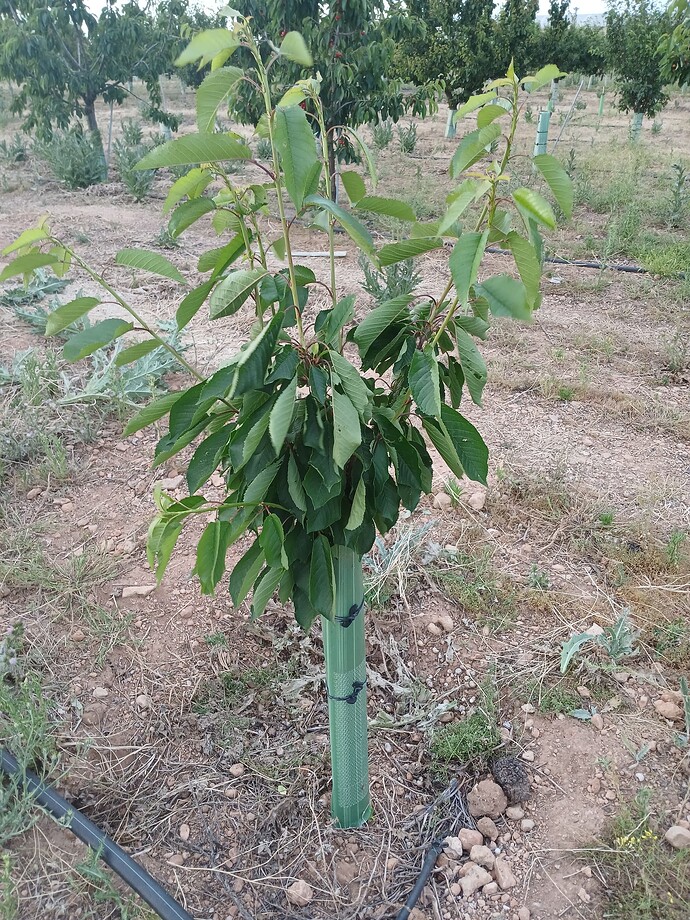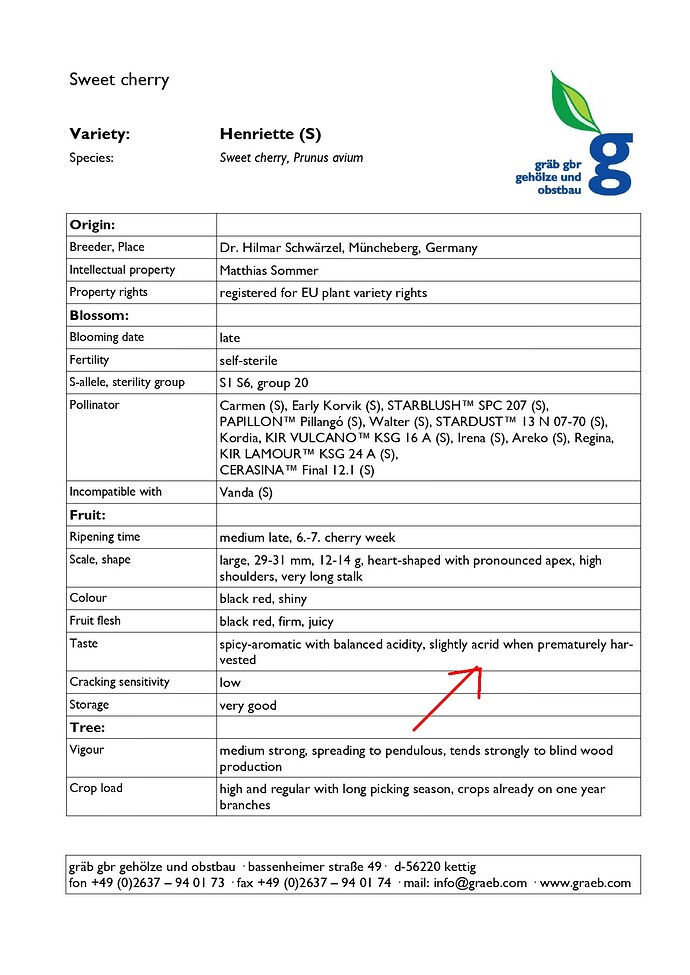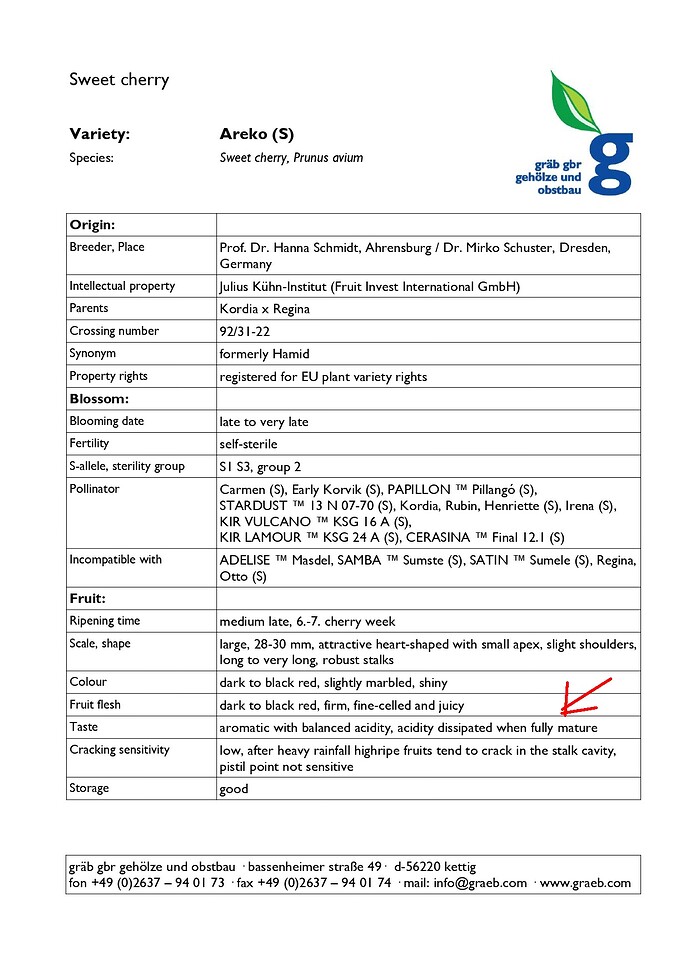And you forgot the detail that the Henriette and Areko cherry trees (2 trees of each variety) grafted this spring are for two new cherry espaliers, but the cuttings come from trees already established in the orchard.
Very easy, because they come from a professional plantation owned by a close friend, one of the largest cherry producers in the Aragon region. He told me that both are excellent, especially Henriette, but that both must be harvested fully ripe. If harvested prematurely, Henriette is a little bitter and Areko a little acidic (these defects disappear when they reach their optimum ripeness).
And notice how curious it is, it corresponds to the information on the data sheets for both varieties.
You know , where I tried Royal Apache years ago, which was the first plantation of this variety in Spain, or Epik-16.
And where I’ll try Petronila, Nipama, or SPC-342.
By the way, I graft these three varieties using the T-Bud system in a few days.
This seems rude to me at the very least, but coming from you, a thirty-year-old kid with little education, you can expect anything.
Let’s see, Kiko.
You know cherry tree physiology perfectly (or you should).
What you’re saying is “LITERALLY IMPOSSIBLE.”
If you graft the cherry variety onto a rootstock and perform annual pruning in the vegetative stage to form a tree using the KGB or Spanish Bush system, it takes at least 3 years to test the first cherries, and with a lot of luck.
The fastest way to test a variety is to graft onto an adult cherry branch, and even then, the minimum is 3 years.
Why am I so certain?
Why does a cherry tree produce its first fruit on 2-year-old wood, onto thick branches.
It’s “impossible” to achieve this from one year to the next, because a cherry tree doesn’t behave that way.
The peach tree, nectarine, or flat peach, does bear fruit on one-year-old wood, but the cherry tree does NOT.
Please, if you know a method to make a cherry tree bear fruit in one year, tell me, for God’s sake, so we can patent the system and get rich 







 .
.
Best regards
Jose

